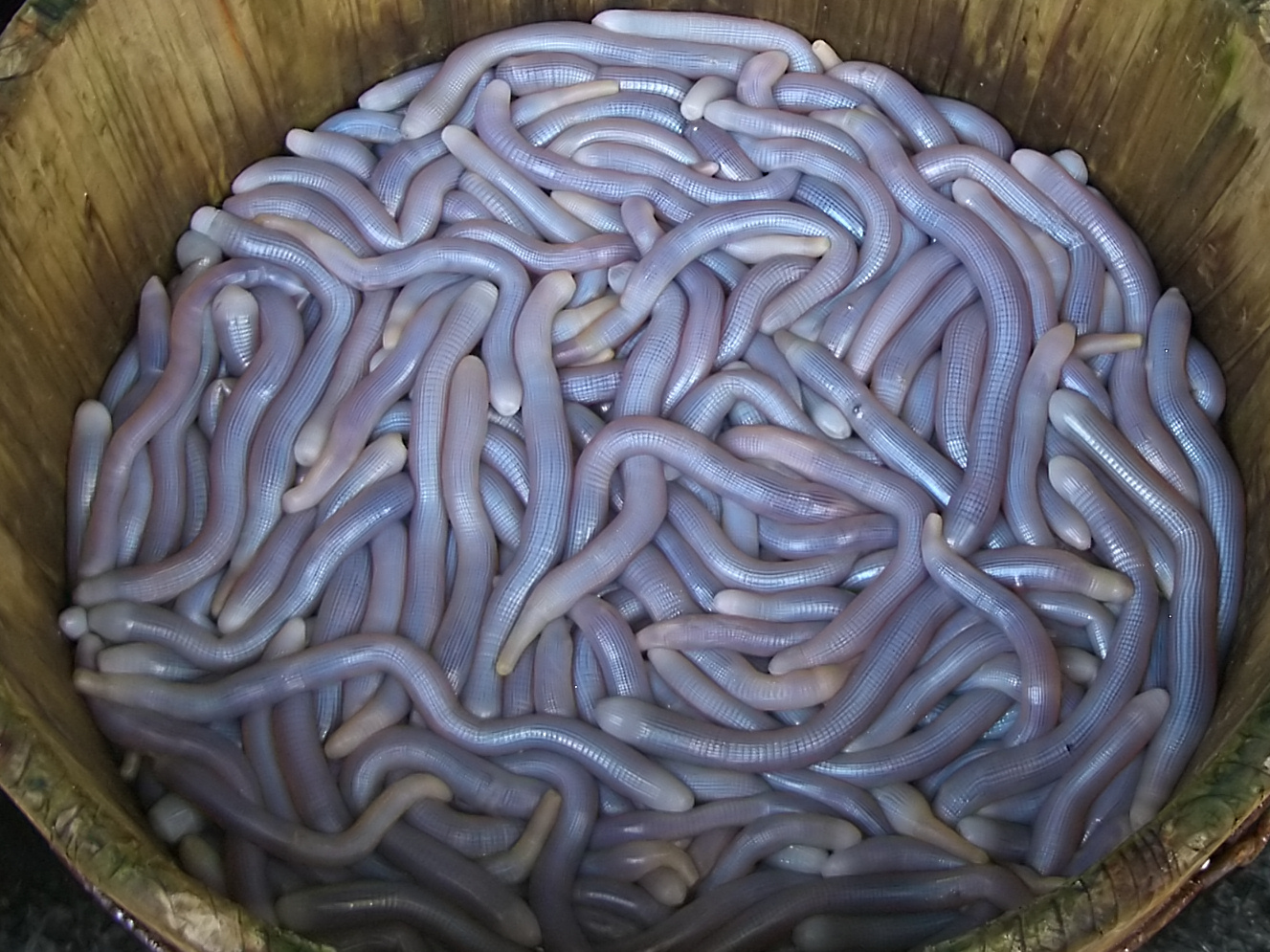The primary ingredients are sipunculid worms harvested from shallow water and muddy beaches on the coast of Fujian.
Here's what they look like. Photo credit: Wikimedia User:Vmenkov
A bunch of these worms are boiled, which releases a slimy collagen into the water that functions similarly to pectin. As the water cools, it is poured into small molds to set like gelatin. A short while later you’ve got small, firm, wiggly mounds of cloudy yellow-gray gelatin in which are suspended long, white worm carcasses. Before you receive a bowl of tŭ sŭn dòng, the vendor will cover it with some combination of chili sauce, mustard, wasabi, soy sauce, vinegar, and cilantro to give it some strong flavors. So what does sea worm jelly taste like, I hear you asking? Frankly, not too much on its own. It tastes and feels like cool, smooth, unflavored (albeit mildly sour and briny) gelatin with some slightly chunkier textures within. The real flavor comes from the sauces on top, which can give it a powerful, sinus-clearing kick. One of the joys of street food is finding truly novel things to eat, and a gelatin made from boiled worms dug up from beach mud is likely to be mightily novel for most people. For a uniquely local street food experience, you really can’t go wrong with tŭ sŭn dòng.

